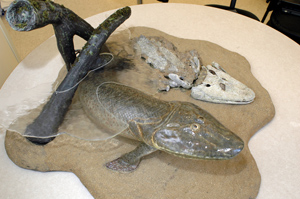|
||
      |
Citations
Bird-brain brilliance
Testing the claim that some grammar is unique to humans, researchers at
Chicago and the University of California, San Diego, trained European starlings—virtuoso
songbirds and expert mimics—to distinguish between a normal bird “sentence”
and one inflected with extra syntactical elements. Nine of 11 starlings
learned to differentiate the patterns, to recognize nonsense syntax, and
to extrapolate grammatical rules to grasp other, longer sound patterns.
Coauthored by Chicago psychologist Howard Nusbaum
and biologist Daniel Margoliash, the study appeared
in the April 27 Nature.
Lonely heart builds pressure
Loneliness is hard on the heart, and it’s no easier on the rest of
the cardiovascular system. A study in the March Psychology and Aging
showed that lonely people posted blood-pressure readings that outpaced
those of the nonlonely by as much as 30 points—enough to nudge normal
blood pressure into stage-one hypertension. Chicago psychologists
John Cacioppo and Louise Hawkley surveyed
229 whites, African Americans, and Latinos aged 50 to 68, adjusting for
other risk factors like weight, alcohol consumption, smoking, medications,
and demographics. Without social connections, the researchers said, lonely
people find stress more threatening and cope with it less effectively. Finding
friends might have “clinical benefits comparable to lifestyle modifications.”

Tiktaalik roseae, the “missing link” between sea and land.
Darwin has legs
Straddling the line between fish and four-legged landlubbers, a 375-million-year-old
fossil discovered on Canada’s Ellesmere Island may close the evolutionary
gap from swimming to walking. Stretching four to nine feet long, the newly
unearthed species, Tiktaalik roseae, possessed fins, scales, and
a primitive jaw, but also a skull, neck, and ribs. Embedded in its fins
were bones resembling land-animal shoulders, elbows, and wrists. Co-led
by Chicago paleontologist Neil Shubin, the research
team reported its findings in the April 6 Nature.
Cave man no more
After scanning the human genome for variations, population geneticist Jonathan
Pritchard has offered the clearest evidence yet for humans’
ongoing evolution. In a paper published in the March 7 Public Library
of Science-Biology, Pritchard and fellow researchers detected 700 genomic
regions where genes appear to have been affected by natural selection within
the past 10,000 years. Among them are genes involved in taste and smell,
metabolism, bone structure, skin color, hair formation, and brain function.
The scientists analyzed data from 209 unrelated East Asians, Europeans,
and Nigerian Yorubans, and their results belie assumptions that human brains
ceased evolving in the pre-agricultural past.
Iraq war calculations redux
One day after U.S. bombers filled the skies over Baghdad in March 2003,
Chicago economists Steven J. Davis, Kevin M. Murphy,
PhD’86, and Robert H. Topel released
a prediction for the war’s expense (see “Fig.
1,” June/03). Although the conflict would cost $125 billion, they
calculated, the price of peacefully containing Saddam Hussein would edge
closer to $630 billion. Three years later, Davis, Murphy, and Topel have
revised their economic forecasts. In a March 2006 National Bureau of Economic
Research working paper, they put the cost of war at $410 billion to $630
billion (in 2003 dollars). Containment, they estimated, would have required
$350 billion to $700 billion.